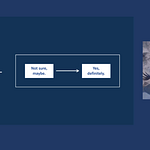Let’s break down what to watch this week:
Wednesday, September 11: The Consumer Price Index (CPI) and Core CPI**
If inflation is high, the Fed may be cautious about making aggressive rate cuts, as it could risk stoking inflation further.
In addition to the broad CPI, we’ll also be looking at the **Core CPI**, which excludes food and energy prices. Why exclude those? Because food and energy prices are highly volatile and can skew the broader inflation picture. By focusing on Core CPI, we get a clearer view of underlying inflation trends without the noise from short-term fluctuations in oil or grocery prices. If the Core CPI comes in lower than expected, it could signal room for a more aggressive 50 basis point cut.
Thursday, September 12: Initial Jobless Claims and PPI
Initial Jobless Claims - This number tells us how many people are filing for unemployment for the first time. Rising jobless claims typically indicate a weakening labor market, which could put more pressure on the Fed to cut rates to support job growth.
Producer Price Index (PPI) - which measures the average change over time in the selling prices received by domestic producers for their output.
Like CPI, there’s a core version of the PPI that excludes food and energy prices to give us a clearer view of inflation trends without short-term volatility.
For Thursday, it’s critical to focus on the **PPI for food and energy**, as those sectors often see the most price movement.
If food and energy prices are rising rapidly, it could indicate that inflationary pressures are building, which might make the Fed more cautious in its rate-cutting approach.
Friday, September 13: Michigan Consumer Sentiment Index
The last big indicator to watch this week - this measures how optimistic or pessimistic consumers are about the economy.
If consumer sentiment is strong, it suggests that people are still confident in their financial prospects and likely to continue spending, which could point toward a smaller rate cut.
On the other hand, a drop in sentiment could be a sign that consumers are growing wary of the economic outlook, which might prompt the Fed to take a more aggressive approach to stimulate growth.
What Does This All Mean for the Fed’s Decision?
Lower CPI, PPI and Higher Jobless Claims = 50 Basis Point Cut from the Fed is likely.
Sticky Inflation, Strong Consumer Sentiment = 25 Basis Point Cut from Fed is likely.
Either way, this week’s numbers will give us plenty of clues about the Fed’s direction!












Share this post